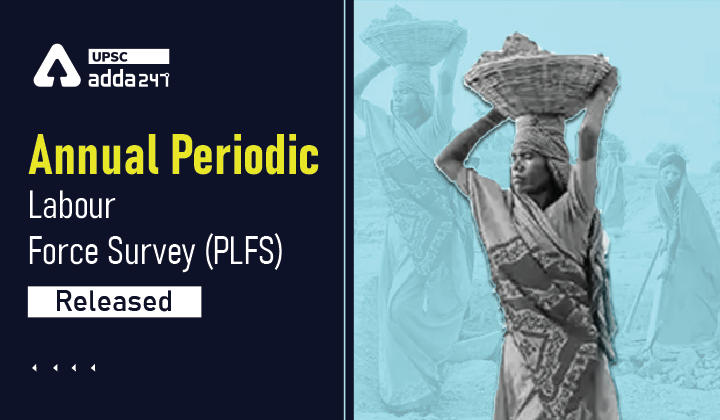Table of Contents
Periodic Labour Force Survey (PLFS)- Relevance for UPSC Exam
- Periodic Labour Force Survey (PLFS) 2022: PLFS report consists of quarterly and annual labour employment-unemployment data about Indian Labour Market. Periodic Labour Force Survey (PLFS) report provides key insights into the conditions of Indian Labour Market and is important for UPSC Mains GS Paper 3 of Indian Economy- Issues relating to planning, mobilization of resources, growth, development and employment.
Periodic Labour Force Survey (PLFS) in News
- Recently, the National Statistical Office (NSO) released the Periodic Labour Force Survey (PLFS) report for the period of 2020-21 (July-June).
- The headline employment numbers provided in PLFS report show an improvement in the employment situation.
Key Findings of PLFS 2020-21
- Unemployment Rate: As per PLFS, Overall unemployment rate as per usual status (reference period of last 365 days preceding the survey), eased to 4.2% from 4.8% in 2019-20.
- The leaked Periodic Labour Force Survey (PLFS) in 2018 revealed that India’s unemployment rate was the highest (6.07%) in four decades.
- Unemployment rates among the educated (above secondary education — 9.1%) and the youth (age between 15-29 — 12.9%) have only declined marginally.
- Slight Increase in LFPR: PLFS 2022 reported that the labour force participation rate (LFPR) or those working or seeking or available for work in the labour force, was the highest in four years at 39.3 per cent in 2020-21.
- Rise in worker population ratio (WPR): According to the PLFS report, worker population ratio (WPR) was at 36.3 per cent, highest in last four years.
- WPR is defined as the percentage of employed persons in the population.
- Gender-wise Unemployment Rate: Unlike in Urban Areas, the unemployment rate was higher for males in rural areas than females.
- In rural areas, the unemployment rate was 3.9 per cent in 2020-21, while that for females was 2.1 per cent.
- In urban areas, the unemployment rate for females was 8.6 per cent, while that for males was 6.1 per cent.
- Current Weekly Unemployment Status: In terms of the more widely used statistic internationally, the current weekly status of unemployment, the figure of 7.5% for all persons in 2020-21.
- High Vacancy in Central Government Offices: The latest data showed that there were 8.86 lakh vacant jobs among all central government civilian posts as of March 2020.
- Rise in Unpaid Work: Employment in the unpaid self-employed category continued to show an increase in 2020-21 by rising to 17.3% from 15.9% in 2019-20 and 13.3% in 2018-19.
- Rural unpaid employment also showed increase to 21.3% in 2020-21 from 20.0% in the previous year, while that for urban areas increased to 6.3% from 5.7%
- In rural areas, Unpaid self-employment for females increased to 42.8 per cent in 2020-21 from 42.3 per cent a year ago, while that for rural males increased to 11.0 per cent from 10.4 per cent.
- In urban areas, unpaid self-employment for females showed a significant increase to 12.4 per cent in 2020-21 from 11.1 per cent in 2019-20, while that for males increased to 4.5 per cent from 4.1 per cent.
- Rise in Labour Force Engaged in Agriculture Work: The PLFS data shows that the share of the labour force engaged in agriculture continued to show a rise in 2020-21, increasing to 46.5 per cent from 45.6 per cent in 2019-20 and 42.5 per cent in 2018-19.
- This shows a reversal of the decades-long decline in the labour force participation in agriculture.
- The increase in share of agricultural employment was seen more for urban areas than rural areas.
The Editorial Analysis- Waiting for Jobs





 TSPSC Group 1 Question Paper 2024, Downl...
TSPSC Group 1 Question Paper 2024, Downl...
 TSPSC Group 1 Answer key 2024 Out, Downl...
TSPSC Group 1 Answer key 2024 Out, Downl...
 UPSC Prelims 2024 Question Paper, Downlo...
UPSC Prelims 2024 Question Paper, Downlo...




